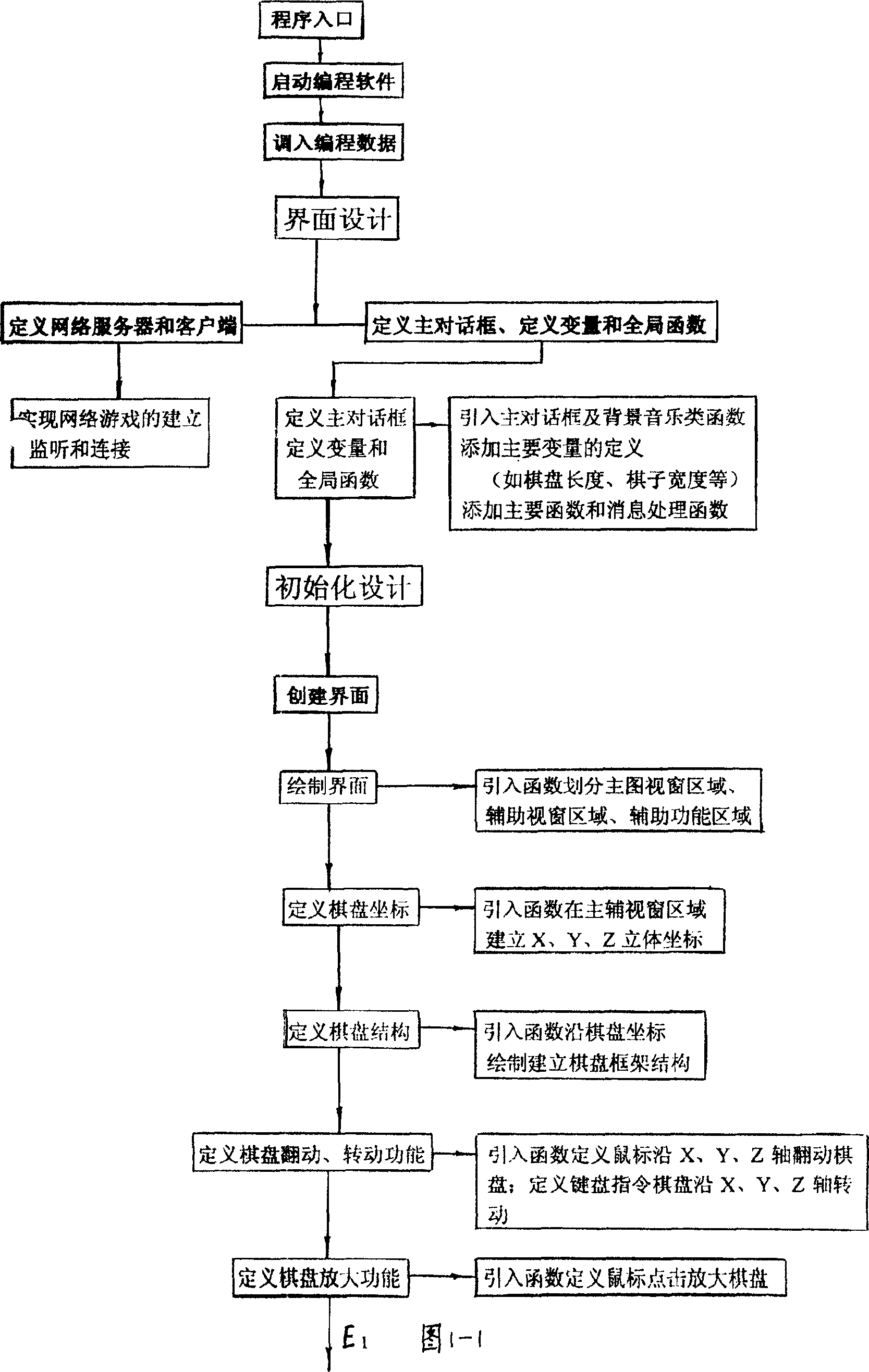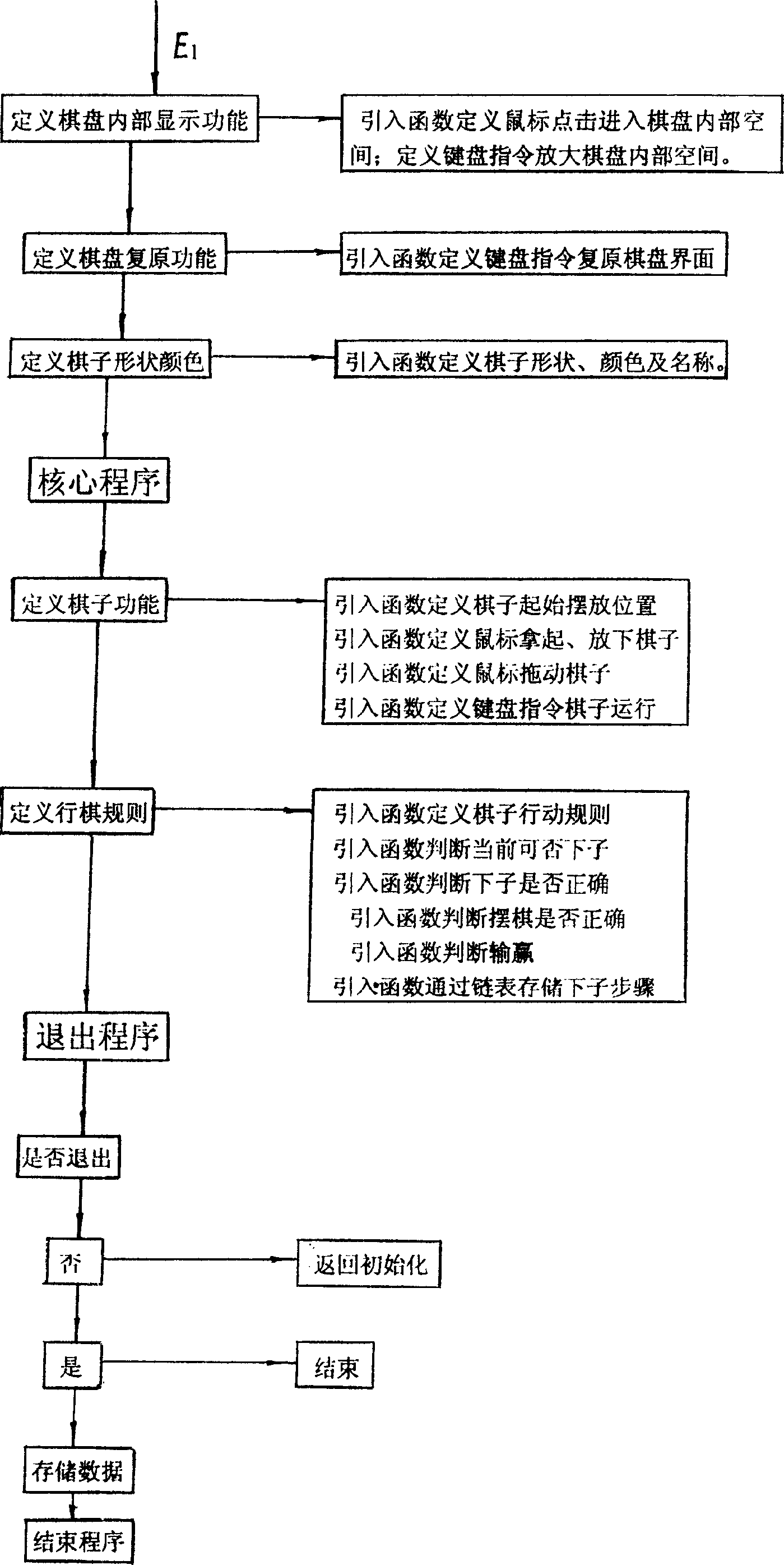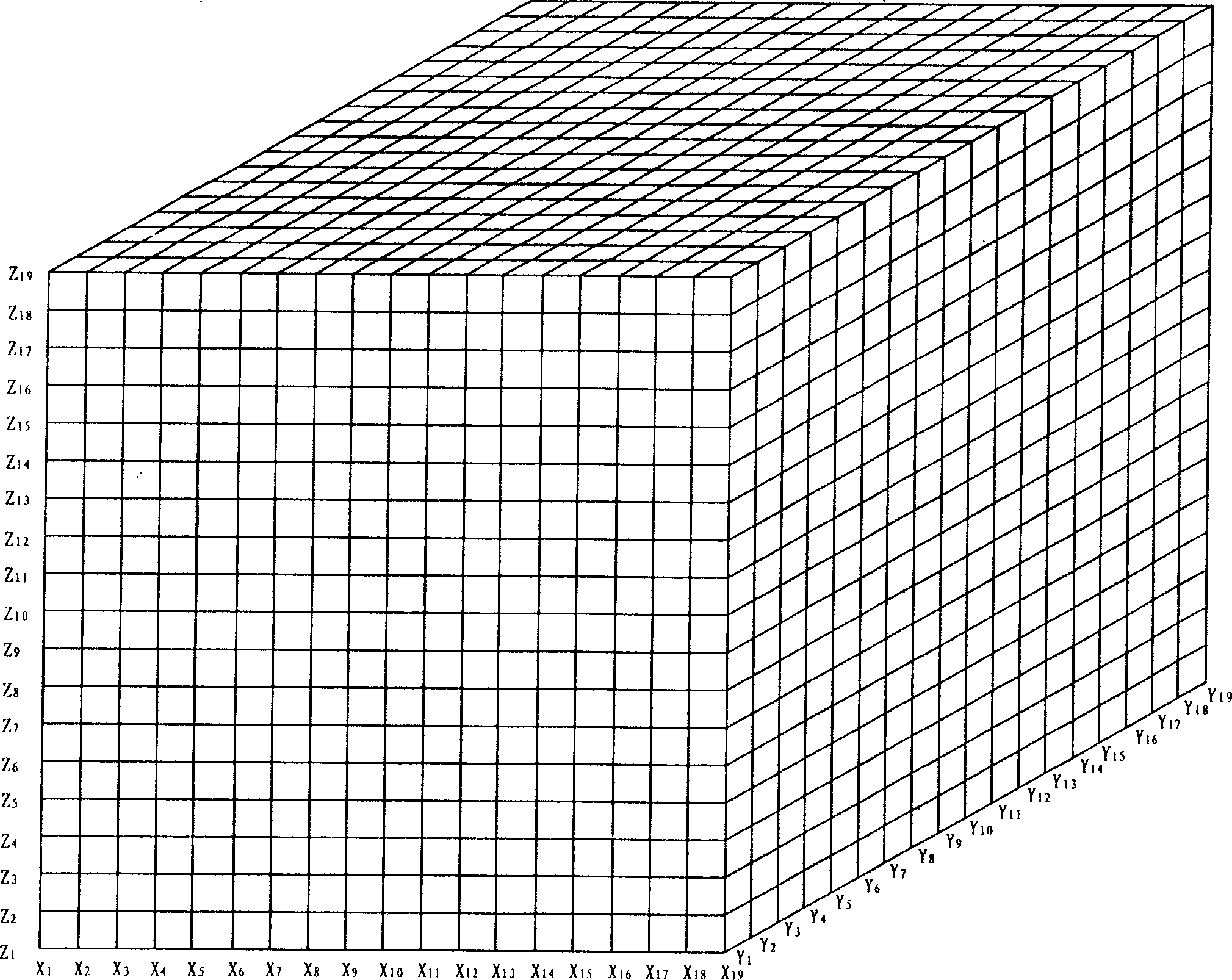Method for demonstrating 3D framework chess by a computer
A three-dimensional, computer-based technology, applied in computing, special data processing applications, image data processing, etc., can solve the problem that it is impossible to talk about playing chess, the way of playing chess is limited to a two-dimensional plane, and it is impossible to establish a three-dimensional space structure chessboard and other issues to achieve the effect of broadening the way of thinking and increasing interest
- Summary
- Abstract
- Description
- Claims
- Application Information
AI Technical Summary
Problems solved by technology
Method used
Image
Examples
Embodiment 1
[0041] Embodiment 1: the method (referring to Fig. 1-1 and Fig. Figure 1-2 ):
[0042] (with Visual C++.Net as the programming language)
[0043] Start Visual C++.Net, open a new project, select the MFC application project, set dialog box options, add CGo2View class function in the project to define the initialization function and CGo2Doc class function file to define the basic operation of the chess record.
[0044] Introduced through the void FillSolidRect(int x, int y, int z, int cx, int cy, int cz,) function, the abscissa (int x) and ordinate (int y) vertical coordinates of the three-dimensional chessboard are established in the CGo2View file (int z) and board width (int cx), length (int cy), height (int cz);
[0045] By Cstring str; for (j=0; j<19; j++) function code, draw the coordinate value of the three-dimensional chessboard;
[0046] by for(i=1; i<=19; i++)
[0047] for(j=1; j<=19; j++)
[0048] for (k=1; k<=19; k++) function code group to draw the display array...
Embodiment 2
[0065] Embodiment 2: demonstrate the method for three-dimensional Chinese chess with computer:
[0066] (with Visual c++.Net as the programming language)
[0067] Start Visual c++.Ne, open a new project, select the MFC application project, set the main dialog box option, add Cpen pen[3] in the option function
[0068]m-pdcBoard->MoveTo(n)
[0069] m-pdcBoard->LineTo(n) (n is a variable, the same below) and other function codes to draw the chessboard and the border line of the chessboard.
[0070] Through the for (n=1; n<=8; n++) function code to define the length coordinate value in the chessboard;
[0071] Through the for (n=1; n<=7; n++) function code to define the width coordinate value in the chessboard;
[0072] Through the for (n=1; n<=1; n++) function code to define the height coordinate value in the chessboard;
[0073] By m-pdcBoard->MoveTo(n)
[0074] m-pdcBoard->LineTo(n) and other function codes draw the connection line of each coordinate value, and the obliqu...
Embodiment 3
[0079] Embodiment 3: demonstrate the method for three-dimensional stereoscopic chess with computer
[0080] Its specific method is similar to Embodiment 1 and Embodiment 2, except that there is an extra filling function for distinguishing the black and white cells of the chessboard.
[0081] The structure of the three-dimensional chessboard of embodiment 3 is referring to Figure 8 , 9 .
[0082] Figure 9 Indicates chess piece Q 1 Can move diagonally forward along the plane to Q 3 , can also move obliquely upward along the facade to Q 2 .
PUM
 Login to View More
Login to View More Abstract
Description
Claims
Application Information
 Login to View More
Login to View More - R&D
- Intellectual Property
- Life Sciences
- Materials
- Tech Scout
- Unparalleled Data Quality
- Higher Quality Content
- 60% Fewer Hallucinations
Browse by: Latest US Patents, China's latest patents, Technical Efficacy Thesaurus, Application Domain, Technology Topic, Popular Technical Reports.
© 2025 PatSnap. All rights reserved.Legal|Privacy policy|Modern Slavery Act Transparency Statement|Sitemap|About US| Contact US: help@patsnap.com



